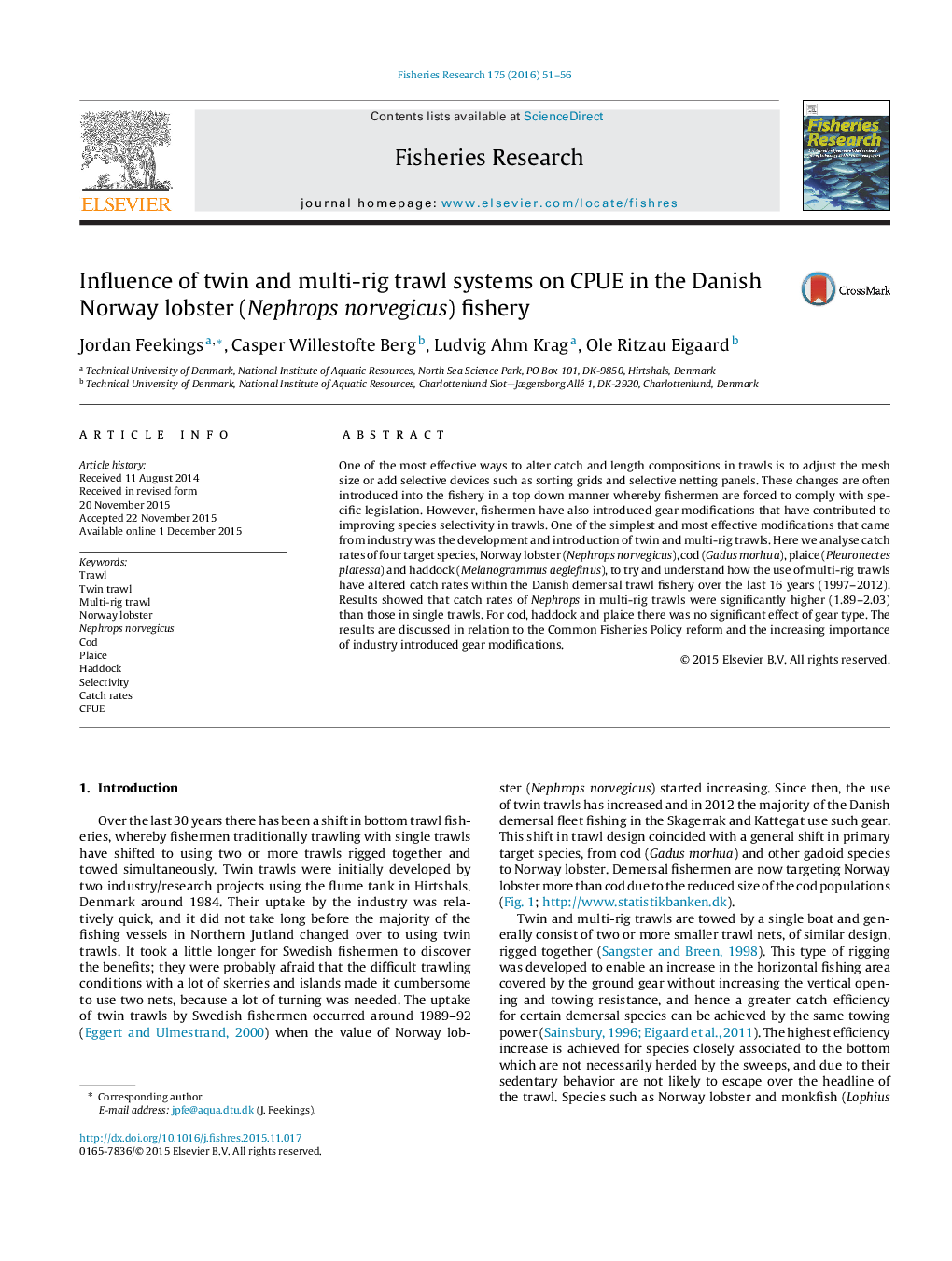| Article ID | Journal | Published Year | Pages | File Type |
|---|---|---|---|---|
| 6385287 | Fisheries Research | 2016 | 6 Pages |
Abstract
One of the most effective ways to alter catch and length compositions in trawls is to adjust the mesh size or add selective devices such as sorting grids and selective netting panels. These changes are often introduced into the fishery in a top down manner whereby fishermen are forced to comply with specific legislation. However, fishermen have also introduced gear modifications that have contributed to improving species selectivity in trawls. One of the simplest and most effective modifications that came from industry was the development and introduction of twin and multi-rig trawls. Here we analyse catch rates of four target species, Norway lobster (Nephrops norvegicus), cod (Gadus morhua), plaice (Pleuronectes platessa) and haddock (Melanogrammus aeglefinus), to try and understand how the use of multi-rig trawls have altered catch rates within the Danish demersal trawl fishery over the last 16 years (1997-2012). Results showed that catch rates of Nephrops in multi-rig trawls were significantly higher (1.89-2.03) than those in single trawls. For cod, haddock and plaice there was no significant effect of gear type. The results are discussed in relation to the Common Fisheries Policy reform and the increasing importance of industry introduced gear modifications.
Related Topics
Life Sciences
Agricultural and Biological Sciences
Aquatic Science
Authors
Jordan Feekings, Casper Willestofte Berg, Ludvig Ahm Krag, Ole Ritzau Eigaard,
